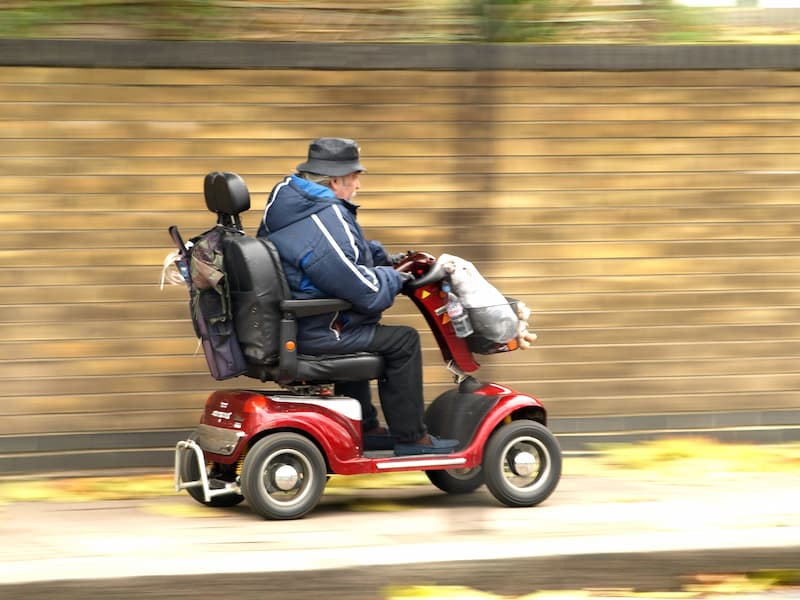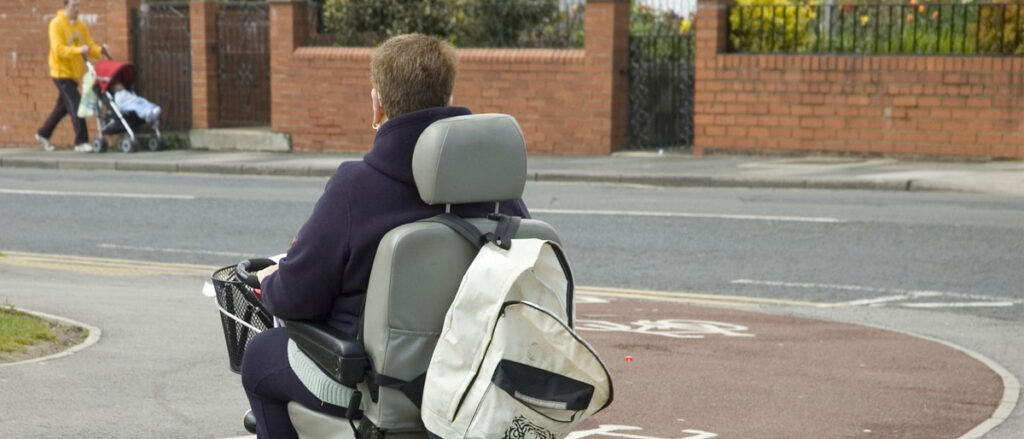Mobility scooters and accessible travel provide independence and convenience for many people. There are however some considerations and challenges to keep in mind when traveling by public transportation. We will explore various forms of public transport and offer tips for making your journey as smooth and stress-free as possible in this handy blog.
Travelling by Car
One solution for long distances is to travel the main part of your journey by car and then do the later section on the scooter, for example driving to a shopping centre and then using the scooter when you arrive. To take your mobility scooter out with you, you will need to make sure that it is compatible with your car. This involves making sure that it will either collapse or dismantle enough to fit in your boot (along with anything that you will buy later) and making sure that you can get it in there yourself.
Some cars can be fitted with ramps, which the mobility scooter can then go up to get into the car. Another option is to use a winch to get the scooter into the car but you must check that the winch is compatible with your car and scooter, otherwise this could cause problems.
Travelling by Bus
Some bus services will allow a mobility scooter to be used on their buses but they must meet certain criteria:
- The mobility scooter is a Class 2 type
- The scooter meets size limits
- You have a permit to travel on the bus with the mobility scooter
- The scooter does not exceed the safe working load of the boarding ramp
- The turning radius is 1200mm or less
To get a permit that can gain access to bus travel with your scooter, you will need to fill out an application and attend a training course that will teach you the correct ways to manoeuvre on and off the bus. If you cannot demonstrate these skills safely, you will be refused a permit.
You must also keep your scooter in good working order so that it is not liable to cause damage to the bus or other passengers during the journey. The permits have a time limit on them so you will need to prove that you still possess the relevant skills over time to retain permission to travel with your scooter. You should check with your local bus/train company before travelling as rules can vary across provider.
More information about this can be found on the RIDC site.
Travelling by Rail
Similar rules apply for train travel to bus travel. The user may need to apply for a permit to travel on the train and the scooter must meet certain size and weight restrictions. A folded mobility scooter is usually allowed as luggage but you must make sure that you or a companion can get it onto the train, as some companies advise their staff not to lift anything for safety reasons.
When travelling by train, you will need to make sure that the stations you will be using are accessible and it is a good idea to give the station 24 hours’ notice of your intention to travel so that you can book assistance at these stations. If you need more information about the facilities at the train stations, then you can call their accessibility helpline and they will be able to help.
Travelling by taxi
Taxis are a convenient way to get around if you don’t own a car. Recently, taxi services have made significant improvements in offering more accessible vehicles for passengers with mobility scooters. When booking your taxi, make sure you ask for an accessible vehicle and mention any other specific needs you might have.
If you have a foldable scooter, it might be easier to hire a standard taxi. When your taxi driver arrives, inform them of your scooter and they should be able to help. Accessible travel is becoming more common so taxi drivers will most likely have some experience in helping passengers with mobility issues.
Travelling by Plane
Airlines will store your mobility scooter in the baggage area but you will not be able to take it into the passenger section of the plane. It is worth getting insurance, just in case anything happens to it, as there is often a limit on what they will pay out. Some airlines will require advanced notice so if you can make them aware of this when you are booking it, that will make the process a lot simpler. You may also need to send them details of your scooter to make sure that they are able to store it correctly.
Check with your airline to see if there are any weight or size restrictions for this before booking your tickets.
On holiday
When booking a holiday, it is important to do some research on what facilities the accommodation has, as well as the local area. If most of the local attractions are not accessible, it would be worth reviewing similar places to see if you could get the same type of experiences there but in an accessible setting. For accessible cities in Europe, check out this site.
If you are planning on going on holiday, we offer Disabled Travel Insurance to cover you if the worst were to happen whilst you are away. Take a look at our handy blog on tips for travelling with a mobility scooter.
Blue Badge Mobility Insurance
Blue Badge offer comprehensive Mobility Scooter Insurance plans to cover you whilst you are out and about on your mobility scooter. We also offer Manual Wheelchair Insurance and Electric Wheelchair Insurance. Contact us today if you would like to discuss our policies further.



